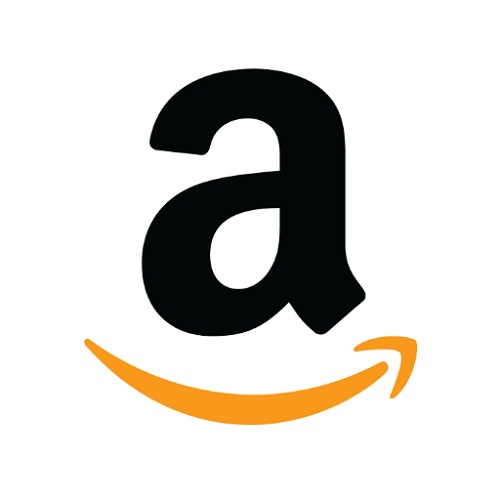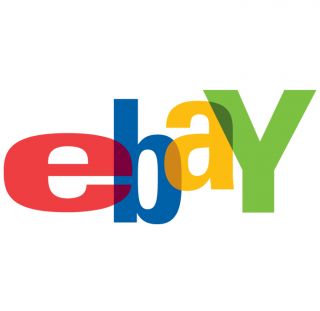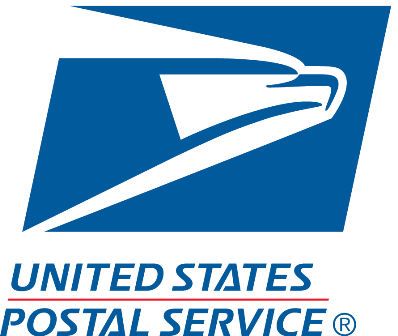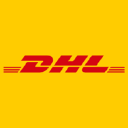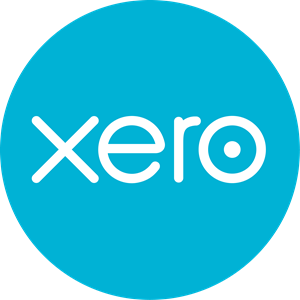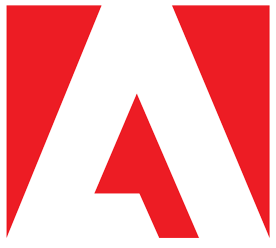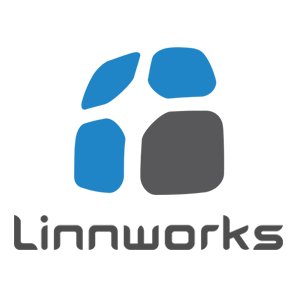How I Started A $75K/Month Liposomal Natural Health Products Brand
Hello! Who are you and what business did you start?
Hi there. My name is Kel Stuart. I established Sanuku APM Limited and my health brand products website, SANUSq, in early 2017, but the foundations for this business model had been laid out over many years prior. The company has a few different revenue streams, but currently, my passion lies with our two health product brands. I created ‘SANUSq’ in 2017 and followed up with ‘Bonne Sante Liposomal’ in 2018. Our flagship product is a proprietary blend liposomal vitamin C product (with a dash of glutathione.)
From a standing start, we are now aiming to hit the 1 million EUR mark this financial year. Our main customer base is in France. This was no small achievement given the fastidious nature of the market in France. We have shipped orders to more than 30 countries since we launched, and have sales sites in multiple languages – all translations have been done by hand as reliance on AI, as good as it has become over recent years, is a recipe for disaster.

What's your backstory and how did you come up with the idea?
I worked a few different jobs after high school before deciding to tackle University in my early 20s. When I was one subject off finishing a Bachelor of Commerce degree (with a major in Accounting) I decided to venture to Japan – my neighbor and I planned for a 4-week summer vacation and both of us ended up staying almost 12 months. The working holiday visa program between Australia and Japan offers a fantastic opportunity for such experiences. There was something about the Japanese culture and structured manner of the society that really pulled my strings.
Be flexible and be open to the possibility (and real likelihood) you cannot get everything right all the time. Accept mistakes and move on.
I returned to Australia, completed my degree, and headed back to Japan the following year for a 6-year stay. During that time, I worked in a management position that I was fortunate enough to wrangle. That was an amazing period. I worked hard and taught myself Japanese to a reasonably proficient level. Most weekends during the winter season I went snowboarding, and every other weekend throughout the year, when there were waves, I went surfing.
It was during these years that I was involved in my first business venture - more a profitable hobby really - with a couple of Japanese friends, importing snowboard equipment and clothing from the USA, and distributing it in Japan. The snowboard goods business was in the days before websites and email. We succeeded in the old-fashioned way with word-of-mouth, which is still an excellent tool, flyers on windscreens, telephones, and fax machines. All sales were collected via bank transfers. It was borne from our desire to pay for our snowboarding trips each week, new snowboards each season, and the occasional overseas trip.
Years later, I provided part of the seed capital to these same friends to launch what is now one of the largest BBQ restaurant chains in Japan, with over 50 outlets and 600 full and part-time employees. My friend, Yoshi (that is me with Yoshi after a surf at Chiba) was also the first in Japan to set-up streaming cameras at beaches throughout Japan. That was an idea he floated in the early 90s just as the internet was expanding. I wish I had his vision. He is now my mentor and a support to me with the preparations for the launch of my brands in Japan. I guess that is a great example of paying it forward!

So, back to the side-business of selling snowboards. I was working a full-time and demanding management role at the same time that we were running the snowboard business, working Japanese ‘salary-man’ hours and often returning home after 9:00pm most nights. I would then sleep a few hours and get up to call suppliers in the USA with orders – it was problematic as we had suppliers on both the east and west coasts. If I was lucky, I managed a couple more hours of sleep before leaving for my day job at 6:05 am. I still remember that I had to leave my apartment at that time, or I would miss my train up to Shibuya in Tokyo. The wonderful thing about the train system in Japan is that if a train is scheduled to depart the station at a certain time, that is most certainly what will occur. If the train is late, or early be even a minute, an apology is given over the loudspeaker.
At some point I chose to return to Australia to add an MBA to my name, returning to Japan yet again and taking up a role with a small management consulting firm until March 2011. During those years I gained valuable insight into small and medium-sized businesses. I had also launched another business in 2004 which was related to sports and was reasonably successful but still more a hobby than a full-time enterprise, and so that did not offer the satisfaction I desired.
I began to turn my focus more toward matters of health. I had always held a strong belief that keeping healthy through exercise and a sensible lifestyle was important, but it was not until 2017 that I was ready to launch into the health supplements market. During this time, my wife and I had moved our young family from Japan to Thailand. To be honest, I did not want to leave Japan – I had lived in Japan for most of my adult life - but in March 2011 the Tohoku earthquake and subsequent tsunami caused significant damage to a nuclear power station in Fukushima and there was a very real possibility of a meltdown that would endanger much of Japan. We were concerned about the long-term health of our children so chose to relocate to Thailand.
So, turning a negative into a positive, I took the opportunity to focus upon launching a new business related to the health industry, and specific supplements. I wanted to build upon my limited knowledge but solid appreciation for natural products, and with a desire to build a business that would serve a purpose in providing customers with products that are beneficial to their long-term health. As a result, the SANUSq brand range of products was born.
Take us through the process of designing, prototyping, and manufacturing your first product.
I had a rough idea of the type of products I wanted to develop, but it was more a case of synchronicity and a dab of good timing that I discovered liposomal technology. The science had been around since the 1960s, but it was not being widely utilized in mainstream health supplementation so it took a while to identify a reputable manufacturer who could produce a true quality product.
Logos and labels were designed, sent to the manufacturer, a website was set-up and we launched with the help of a few good affiliates. Along with the liposomal products, we added some lesser-known herbal products. Of course, there was quite a bit of back and forth with the formula for our initial liposomal product, but the herbal products were quite a straight-forward addition. Testing for efficacy was done, as is done regularly, at local labs.
We now have up to 20 products on our main sales site and 3 other sales sites across various languages and denominations, servicing different parts of the world, with the most recent addition being our sales site focussed on the US market. We have distribution points in the UK and the USA.
We have our multi-lingual sales site running on Shopify with Langify to handle the display of the language pages based on the users OS. Our other 3 sites run on 3dcart. It is not an ideal platform, but unless considering Magento and you can handle the associated running costs, there is no single ideal platform that ticks all the boxes.
Building organic traffic is still our biggest hurdle. We tried Facebook advertising in the past, but it was not successful. In fact, it was a clear failure. The cynic in me could offer a suggestion as to why it failed, and the machinations of the pharmaceutical industry vs the natural supplements industry but suffice to say the first attempt was a waste of time and money. We are now approaching Facebook from a different angle.
I was over-confident in the early days in terms of products. I did not do enough market research and I made the mistake of considering what the market wanted would be the same as what I would want to consume as a savvy and reasonably knowledgeable consumer.
What we have always focused upon is having very well-researched and interesting content on our sites and building trust and brand authority organically. But of course, our products need to be of the highest standard possible, and that includes ensuring delivery in a timely and cost-effective manner.
We kept start-up costs to a minimum and chose to set-up companies in Hong Kong and the UK with just the bare required amounts of capital to satisfy banks and the local jurisdictions. I had a company in Japan from previous ventures, and preparations are underway to launch in Japan soon. The wonderful thing about running an online business is that it really can be portable, and staffing can also be handled in a virtual sense. We have 2 very capable full-time staff and the rest is outsourced via Upwork to some very loyal and incredibly talented people I have gathered around me (in the virtual sense) from various countries over the past several years. Our order fulfillment is handled efficiently by 3rd parties in the UK and the USA with the help of Linnworks. Besides regular emails and ‘phone calls, I aim to visit our main service providers at least every 12 to 18 months.
Our inventory is shipped with the help of Pexgo International. They handle all importation documentation and logistics and ensure that all issues that may arise are handled efficiently and professionally.
Describe the process of launching the business.
Prior to launching the SANUSq brand, I had established a solid relationship with an exceptionally talented affiliate marketer based on trust and mutual respect for the benefits of honesty and hard work. This relationship, and a small database I had from previous ventures, allowed us to make a good start in the marketplace. We self-financed our start – no loans or outside investment – and negotiated good settlement terms with all our suppliers. Working with freelancers helped in this regard as we were not tied to heavy fixed monthly outgoings. Our first month was reasonable given the nature of the products – liposomal technology was not well known – and our first year of gross revenues was around $400,000. We launched with all our products on sale.

In the early days, we accepted just Paypal and Skrill (previously known as Moneybookers.) We tried a gateway called Alternative Payments, but that did not work out, so we removed that from the site in 2018. We soon added Stripe, but I had to fly to the UK specifically for a meeting with the bank to get that account started. Once I added Stripe, and a small app on the Shopify site to hide the Paypal graphic they force upon users, we moved sales volume to be 65% through Stripe and reduced commissions significantly. We also chose to only accept payments from our resellers and wholesale customers via Stripe or bank transfer, thereby further reducing fees. And we have now decided to remove Paypal as a payment option. There are a number of reasons, but the main one being the high operational fees and very poor support.
Looking back at the launch, the only thing I would have done differently would have been to gather a larger audience and do more research on the pricing. But hindsight is 20-20!
Since launch, what has worked to attract and retain customers?
We have built loyalty to our brand by providing quality content and quality products at reasonable prices. However, after-sales service, even in the online market, is an essential component. If ever there is a leak or broken seal with our products, we replace the item at no charge. We accept that some people may ‘fudge’ the situation but in general we have found and choose to believe that people are honest. And that is a two-way street.
We have only had a small number of issues over the years, and I can say with confidence that almost 100% of the customers who experienced leaking bottles and subsequently received a resend from us at no cost, are still customers and have bought from us many times over, easily recouping resend costs. Proactive and humble customer support is especially important.
We have recently moved back to Aweber from Mailchimp for our mailouts. Shopify has recently launched a mailing service, and 3dcart also has that facility, but the 3dcart option is a poor alternative and I prefer not to have all my eggs in one basket so I will not be using Shopify.
We are setting up marketing campaigns and have ebooks to giveaway, but at the end of the day what people want most of all is access to good quality products at reasonable prices. We find that coupons and the occasional gift product work very well. But do not under-estimate the importance of fast, efficient, and well-priced shipping options. We might be in the business of selling health products, but customers are quick to lay responsibility for delayed packages and damages during transit at our feet. We utilize the ticketing platform on ZOHO Desk for our communications with customers, having set-up support departments for each URL.
We are currently testing the waters with Amazon UK and will be launching in Japan on Amazon Japan at the same time as we establish a website specifically targeting the Japanese market. We decided against Rakuten at this point, as Amazon seems to be capturing more of the market and offers a better overall user experience. The Japanese market is well versed with online purchasing and has a high expectation for fast and accurate and inexpensive deliveries. Although the Amazon model – as with eBay (which we utilize in the UK) – takes a hefty fee from the bottom line, both platforms offer good exposure. All our labels display our website URL, and we find that many repeat customers find us this way.
Google Analytics is, of course, beneficial and a given resource for tracking customer data. We are also looking at the Google Merchant facility, initially in the UK.
Our social media campaign on Instagram and targeting influencers, specifically in the US, will launch soon. We have had our graphics freelancer producing unique graphics for each of our blog articles since the beginning, and graphics for the Instagram campaign will be just as unique and will be very well catered for by the same creative artist who created all of the SANUSq brand labels.
How are you doing today and what does the future look like?
Our conversion rate last month across all platforms was an extremely healthy 4.13% and our sales volume was a 4-fold increase in December. The demand for Vitamin C supplementation skyrocketed worldwide on the spread of COVID-19. This was great for us in one way, and a big negative in another. With a 3-month lead time on this product, we did not have production orders in place soon enough to ensure we had stock to satisfy the increased demand. As a result, we will have a few weeks without inventory. This is a perfect example of the unknown that is impossible to foresee clearly but must be considered in your SWOT analysis. Juggling cash-flow, and projecting sales volume while keeping an eye on expiration periods for consumable products with sensitive storage requirements is not to be taken lightly. But that is a bearable problem to have – much better than limited inventory and limited sales!
We work on a gross margin that allows us some flexibility in offering customers attractive discounts on retail pricing, and which still allows us to entice resellers and wholesalers to buy from us. It is a playoff between higher margins for retail sales which go hand in hand with higher acquisition costs per customer, and higher back end maintenance and support for the customer, as to lower margins but larger per order quantity sales to resellers, medical professionals and wholesalers.
We offer free shipping over a certain order value on our France and EU focussed websites, and this has given us an increased average order value and volume which offsets the increased subsidization of orders. Overall, that strategy has improved our bottom line.
In the UK and USA, we offer 100% free shipping on orders of all values, but we also offer quantity discounts. The average order contains 3 to 4 items. We are unable to offer quantity breaks on our Shopify sales site as the plug-ins available do not work with Langify and the multi-lingual aspect of that site. That is the main reason we decided to launch the other sales sites on 3dcart.
We do not currently spend anything on direct advertising. Our focus is to grow organic traffic. We are actively recruiting quality affiliates and influencers through social media and searches. My experience has been that organic traffic and converted sales through reputable affiliates – and reputation is especially important in this field – are more likely to become long-term repeat customers than ‘bought’ traffic. We have a 60% return customer rate and that spells good times ahead if we do not screw-up in some major way! And there are many ways that could happen, so I am forever vigilant.
Our systems process orders every 15 minutes through our fulfillment services. Orders are processed and dispatched within 24 hours in 98% of cases – excluding orders received on Friday afternoons, weekends, and public holidays – and mostly on the same day. Our average monthly order volume has increased from 179 orders per month in 2017 to 344 orders per month so far this year, with a steady increase in the average value of each order. We have expanded our product range over that period from 6 items to 20 items and aim to add at least 1 new product each quarter.
Shipping from the UK to the EU is currently our biggest problem, with high costs and poor delivery times. We are currently looking at ways to offer a better experience to the customer and yet maintain current margins without subsidizing shipping to the point where it negatively impacts our bottom line. We are competing with several brands in the EU market who are positioned to ship locally, whereas we are shipping across the channel from the UK. It is a delicate balance of product pricing and shipping subsidies. But we have a superior and unique product – our repeat customer rate is a clear reflection of that quality - and so we tend to have some leverage in this regard.
This is yet again a reason for our expansion with resellers and wholesalers. It is a playoff between projected higher retail margins and immediate bulk lower wholesale margins. Our target is to expand the range of products which resellers and wholesalers purchase – currently the main interest is with our Vitamin C products – and thereby build brand awareness of a broader range of our products across a more diverse marketplace.
Through starting the business, have you learned anything particularly helpful or advantageous?
I was over-confident in the early days in terms of products. I did not do enough market research and I made the mistake of considering what the market wanted would be the same as what I would want to consume as a savvy and reasonably knowledgeable consumer. It takes a lot to educate the market on what is still essentially a niche area of the health supplements industry, although nowadays there are many more competitors on the market with liposomal products than when we launched, and that is a problem on many fronts. There are many brands claiming to be based on liposomal technology, but I know of several – and I cannot name them here for legal reasons – which are simply emulsions, or worse. When a consumer tries these inferior products and does not gain any health benefits, as they would from a true liposomal product – particularly if it is their first experience with liposomal based products - they tend to become disbelievers.
The fake emulsion products have a much lower per-unit production cost, so again this has obvious ramifications for remaining competitive. And there is the push back from large pharmaceutical companies and the medical fraternity, all supported by Google and Facebook, to suppress information to the general public that vitamin supplementation and a healthy lifestyle is beneficial.
There have been many challenges in building the business, and there will be many more. I relish every day as a challenge. Sure, I feel overwhelmed at times, but the more times I get through the difficult patches, the more energy, and enthusiasm I have to tackle the next problem, and there will always be problems to resolve – but as the well used saying goes ‘problems are just solutions waiting to be discovered’. Choosing the better solution is the tricky part!
The key is to enjoy what you do, and it is better to have a purpose for what you are doing other than just financial gain. Money is important and allows you to do things that may help you achieve satisfaction and feel content, but money (perse) should not be the goal.
What platform/tools do you use for your business?
- Sales platforms: Shopify, 3dcart
- Email marketing: Aweber
- Payment gateways: Stripe, Paypal, Skrill
- Fulfillment and Logistics services: Access, Xpert, Pexgo
- Human resources: Upwork
- Customer service: ZOHO Desk and ZOHO Workdrive
- General admin: Manager, Trello, Dropbox
Advice for other entrepreneurs who want to get started or are just starting out?
To succeed as an entrepreneur, you need self-discipline and mental and emotional energy. My preference is for an early start each day, exercise of some description, see the kids off to school, be at home when they get back from school, and eat dinner with the family as often as possible.
I have some extraordinarily successful friends who have ruined their health and families through overwork, but they have remarkably successful businesses. I commend their business acumen but question their choices. Likewise, they question why I have not expanded my business faster, taken on debt and investors to finance expansion plans, and all that goes with it.
Find a balance.
Be flexible and be open to the possibility (and real likelihood) you cannot get everything right all the time. Accept the mistakes and move on.
Where can we go to learn more?
- Sales platforms: sanus-q.com, sanus-q.co.uk, sanus-q.fr, sanusqliposomal.com
- Articles: SANUSq primary blog library
- Social media platforms: Facebook, Instagram

Download the report and join our email newsletter packed with business ideas and money-making opportunities, backed by real-life case studies.

Download the report and join our email newsletter packed with business ideas and money-making opportunities, backed by real-life case studies.

Download the report and join our email newsletter packed with business ideas and money-making opportunities, backed by real-life case studies.

Download the report and join our email newsletter packed with business ideas and money-making opportunities, backed by real-life case studies.

Download the report and join our email newsletter packed with business ideas and money-making opportunities, backed by real-life case studies.

Download the report and join our email newsletter packed with business ideas and money-making opportunities, backed by real-life case studies.

Download the report and join our email newsletter packed with business ideas and money-making opportunities, backed by real-life case studies.

Download the report and join our email newsletter packed with business ideas and money-making opportunities, backed by real-life case studies.

